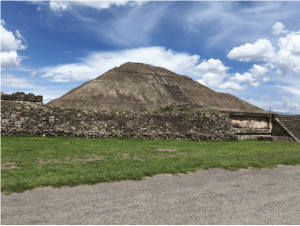[mks_dropcap style=”letter” size=”48″ bg_color=”#ffffff” txt_color=”#000000″]F[/mks_dropcap]raming in the media. As communication scientists, we’ve all heard that before. Everything we see and read is framed in a certain way, whether we realize it or not. Often, countries outside of Europe (if you ignore North America and Australia for a moment) are seen as ‘dangerous’, what with natural disasters occurring daily, guerillas abducting journalists, and the horrible poor neighborhoods through which you really cannot walk safely. This might be true, but does this give you the full picture?
I remember the day I told my friends that I was going to Mexico. Alone. Each reaction (verbal and facial) was hilariously priceless. “Oh but, isn’t it, like, dangerous?”, “I hope you’ll come back alive.” My mother wouldn’t even pay this year’s tuition fee before she knew I was back safe and sound. I must admit, I was quite scared myself. Especially since all you hear about Mexico includes stories about scary drug cartels and locals scamming naive tourists. Basically – you are pushed to believe that everything outside the Western world is scary and you should never go there.
Framing is everywhere
There are dozens of examples of such frames existinging (try Googling ‘dangerous places’). However, exposing you to one such frame would not nearly show the effect that these frames might have on all of us. Since my childhood, I have been seeing messages about the dangerous Mexico – in the news telling us about a war between two drug cartels, on Facebook, where the negative news is shared, and again after a third earthquake in a row. While this may be true, it is quite exaggerated (there is, in fact, not a robber coming for you every five meters, I promise) and it definitely does not give you the full picture of the country. The positive sides are never emphasized.
Of course, only the negative sides are emphasized. Isn’t that what sells? Nobody would buy a newspaper that says: “Look at how these two drug cartels made peace!” and television newscasts could stop producing if all they would report about were things like “The three most beautiful sunsets in Nicaragua”.
But, as communication scientists, we ought to be critical as well. As my grandfather always says: not everything on the news is a lie. But seriously, we should be aware of the fact that what we read is framed, always. Just like what you are reading right now. While we are educated to watch and read critically, not everybody enjoys this privileged position. Many lack news literacy. Everybody can be greatly influenced by such frames and accept them as they are presented. If we do believe that everything outside of the Western world is so scary, how will we learn that this is not always true?
These danger-frames are here for a reason, but we ought to look through them
This acquired fear we have, is not necessarily one hundred percent wrong. Of course, certain elements can be dangerous, and I would not recommend you to go to some specific neighborhoods. But this is exactly why we are educated to think critically: to differentiate between dangerous and non-dangerous, not based on the ‘danger-frame’, but based on experiences and knowledge.
So, yes, these danger-frames are here for a reason, but we ought to look through them and assess reality versus exaggeration. Without this ability to overcome the fear acquired due to the frames, I would never have discovered the beauty of Mexico.

Cover: Jaduial





